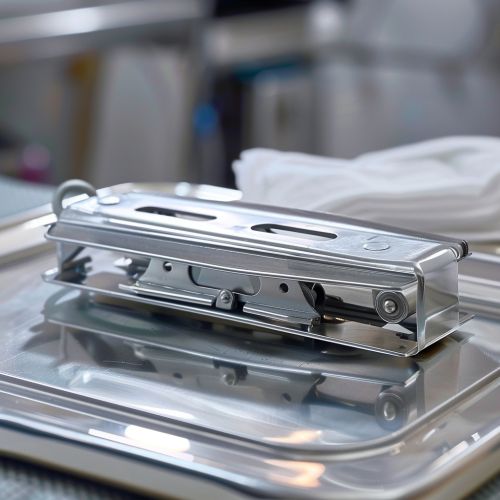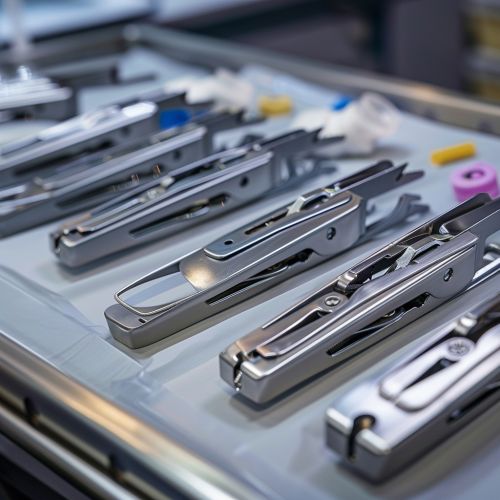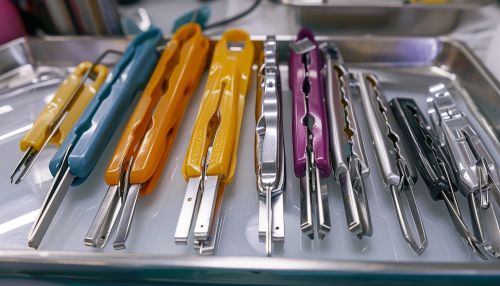Surgical Staple
Overview
A surgical staple is a specialized medical device used in surgery to close skin wounds, connect or remove parts of the bowels or lungs. The use of surgical staples over sutures reduces the local inflammatory response, width of the wound, and the time it takes to close.


History
The concept of surgical staples has its roots in the early 20th century, when a Hungarian surgeon, Hültl, designed the first surgical stapler. His device, known as the Hültl's stapler, was a complex and bulky instrument that required two people to operate.
Types of Surgical Staples
There are two main types of surgical staples: skin and internal. Skin staples are used to close skin wounds and are typically made of stainless steel or titanium. Internal staples, on the other hand, are used to connect or remove parts of the organs, such as the bowels or lungs, and are typically made of titanium.
Skin Staples
Skin staples are typically used in the closure of skin wounds during surgery. They are made of stainless steel or titanium and are designed to minimize tissue reaction. Skin staples are often used in emergency rooms for the treatment of lacerations.
Internal Staples
Internal staples are used in a variety of surgical procedures to remove or connect parts of the organs. They are typically made of titanium, a material that is resistant to corrosion in the body. Internal staples are often used in procedures such as bowel resections and lung surgeries.
Surgical Staplers
Surgical staplers are specialized devices used to deploy surgical staples. They come in various shapes and sizes, depending on the type of surgery they are used for. Some staplers are designed to be used once, while others are designed to be reloaded and used multiple times.


Skin Staplers
Skin staplers are designed to close skin wounds. They are typically disposable, single-use devices that are pre-loaded with a cartridge of staples. Skin staplers are often used in emergency rooms and operating rooms.
Internal Staplers
Internal staplers are used in a variety of surgical procedures to remove or connect parts of the organs. They are typically larger and more complex than skin staplers. Internal staplers can be reloaded and used multiple times during a single surgical procedure.
Advantages and Disadvantages
The use of surgical staples has both advantages and disadvantages. On the positive side, surgical staples can be applied more rapidly than sutures, reducing the time of surgery. They also provide a more consistent and predictable healing process. However, surgical staples are also associated with a higher risk of infection and dehiscence (separation of the wound).
Complications
While surgical staples are generally safe, complications can occur. These include infection, allergic reaction to the staple material, and dehiscence. In rare cases, staples may also migrate and cause damage to nearby organs.
Future Developments
The field of surgical staples continues to evolve, with new materials and designs being developed to improve patient outcomes. This includes the development of bioabsorbable staples, which dissolve in the body over time, eliminating the need for staple removal.
